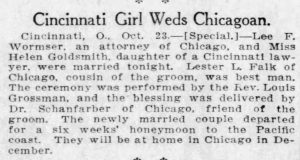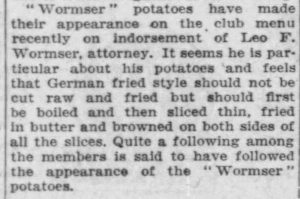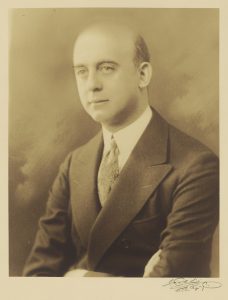Leo Falk Wormser (1884-1934) was a native of Chicago and a prominent figure in the city. After attending law school at Harvard and the University of Chicago, he became a successful lawyer and was the personal attorney of Julius Rosenwald, one of the richest men in the city’s history. In 1911, he married Helen Goldsmith of Cincinnati, and the two made their home in Chicago.

As a member of the city’s elite, Leo maintained a civically active, cosmopolitan lifestyle. He was a trustee of numerous educational and charitable institutions, including the Museum of Science and Industry, and a leader in the local Jewish community. He and his family attended films and theatre productions, dined at fashionable restaurants and clubs, and vacationed in Europe. His daughter, Elaine, recalled her father’s “exquisite taste,” manifest in the collection of seventeenth- and eighteenth-century European artworks that adorned their home.

Evidently, Leo’s taste was influential outside the home as well, inspiring a menu item at Chicago’s fashionable Tavern Club—the “Wormser potatoes.”

In 1934, Leo died unexpectedly at only 50 years old. His widow, Helen, and 22-year-old daughter, Elaine, moved out of their Drake Tower penthouse in the following months, bringing nearly everything from Elaine’s bedroom with them. After marrying and settling in Cincinnati, Elaine continued to retain the contents of her Urban-designed room. In 1973, she generously donated nearly all the remaining items to the Cincinnati Art Museum.
